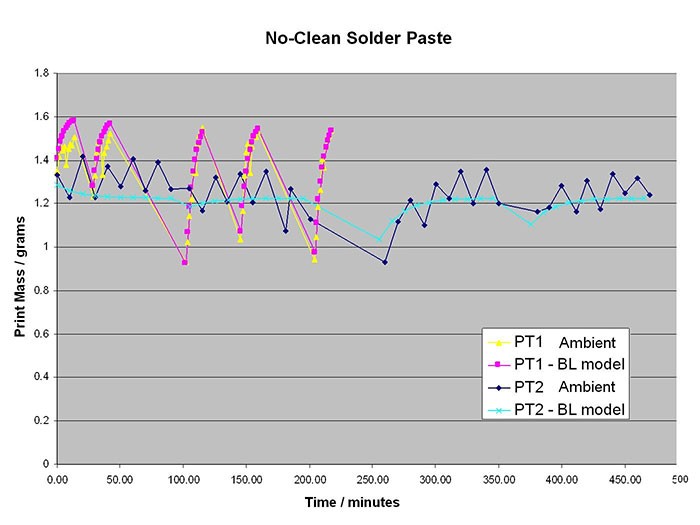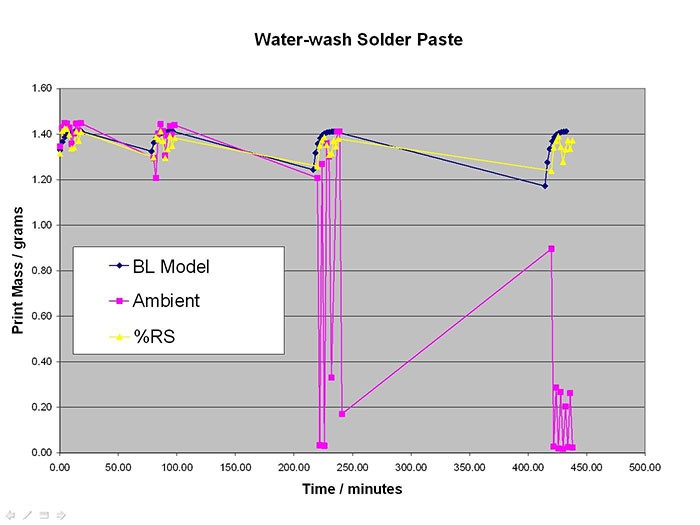Had some very interesting conversations at the IWLPC show last week, as always: one discussion was with my good friend Jeff Schake of Dek. He knew I had done some work a few years ago on a system for preventing solder paste drying out on the stencil by maintaining a set solvent vapor pressure, or “%RS” (the solvent equivalent of a %RH) over the paste.
Almost as a byproduct to my engineering work, I realized that I would need a tool to differentiate between solder paste that was losing solvent, and one that was simply “thickening up” due to time-dependent rheological changes (TDRC). TDRC includes phenomena such as thixotropy and rheopexy. Thixotropy, or shear-thinning, will be familiar to everyone who has had to shake a glass bottle of tomato ketchup in order to get the darned stuff to come out of the bottle: the ketchup has a weak gel-like “structure” that can be broken down to a low viscosity structure by simply shaking it. The (retardation) time it takes to break the “structure” down can be modeled by a simple exponential function based on the rheological equivalent of a half-life, as can the (relaxation) time. "Relaxation" here means the rebuilding of the gel-structure with time of the paste when it simply sits with no shearing forces, and the rate at which it rebuilds is dependent only on the diffusion kinetics - [just in case you read the title of this blog entry and had mental images of solder paste tanning itself in the sand on Palm Beach].
The no-clean solder paste studied certainly did change in viscosity with time, but the change was reversible, fitting the rheological model rather well (data shown below) but demonstrating that irreversible drying (solvent loss) was NOT the prime cause of the stencil clogging and other problems seen.

Contrast this with the water-wash paste (data shown below), which even after a couple of hours showed signs of irreversible performance degradation that could be prevented by maintaining a controlled atmosphere as a specific %RS over the paste surface during its stencil-life.

Most no-clean pastes these days require little or no kneading (stirring or printing on the stencil) before they are used, but as a rule of thumb: the more kneading a paste requires before it is useful – the less time it can be left on the stencil between prints.
Mechanistic insights like this are also helping us to develop improved wafer-bumping and flip-chip solder pastes.
Cheers! Andy


